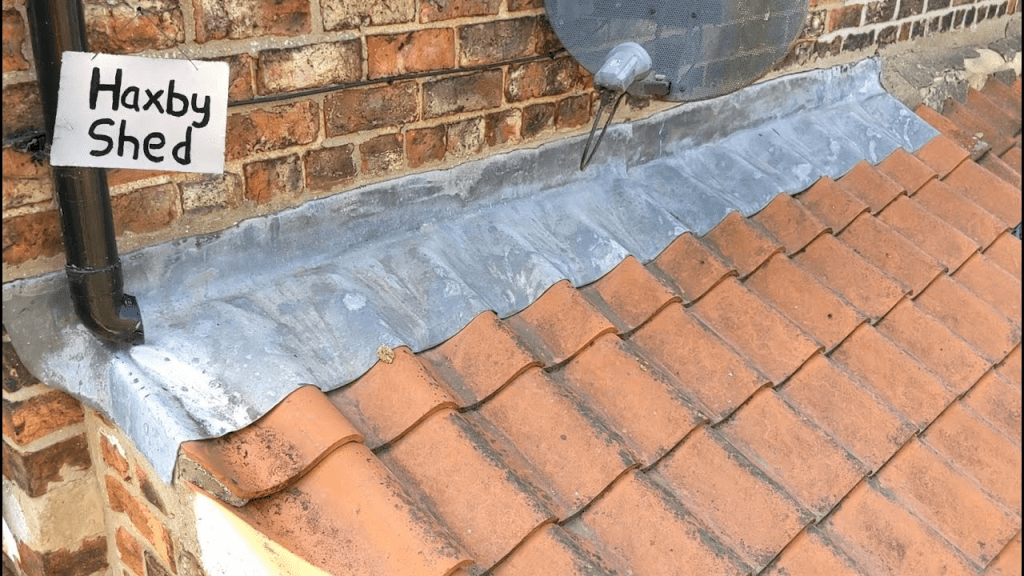When it comes to roof maintenance and repair, one critical component that often requires attention is the flashing. This vital element helps prevent water from seeping into your home through the seams and joints of your roof. If your flashing is damaged or deteriorating, you might need to replace it. But how much does it cost to replace flashing on a roof? In this comprehensive guide, we’ll explore the factors influencing the cost, the steps involved in the replacement process, and how you can budget for this essential roofing repair.

What is Roof Flashing and Why is it Important?
Roof flashing is a thin material, typically made of metal (such as aluminum or galvanized steel), that is installed in joints and seams on a roof to direct water away from vulnerable areas. It is commonly placed around chimneys, vents, skylights, and along roof valleys to ensure that water does not penetrate through these openings. Properly installed flashing is crucial for maintaining the integrity of your roof and preventing leaks that can lead to significant damage and costly repairs.
Read too: How To Replace A Mobile Home Roof: Step-by-Step Guide for Homeowners
Factors Affecting the Cost to Replace Flashing on Roof
Several factors can influence the cost to replace flashing on a roof. Understanding these factors will help you better estimate the expenses and make informed decisions. Here are some key considerations:
1. Type of Flashing
There are various types of flashing materials available, including aluminum, copper, galvanized steel, and lead. The choice of material will impact the overall cost of replacement. Copper flashing, for instance, is more expensive than aluminum but offers greater durability and longevity.
2. Roof Size and Complexity
The size and complexity of your roof play a significant role in determining the cost of replacing flashing. A larger roof with multiple angles, valleys, and intersecting surfaces will require more flashing material and labor, leading to higher costs.
3. Accessibility and Roof Pitch
The accessibility of your roof and its pitch (angle) can affect labor costs. Steep or difficult-to-access roofs may require specialized equipment and additional safety measures, which can increase the overall cost of the project.
4. Existing Damage
If your roof has existing damage or if the flashing has caused damage to surrounding areas, additional repairs may be necessary. This can add to the overall cost of replacing the flashing.
5. Labor Costs
Labor costs can vary depending on your location and the expertise of the roofing contractor. It’s essential to obtain quotes from multiple contractors to ensure you’re getting a fair price for the replacement.
How Much Does It Cost to Replace Flashing on a Roof?
So, what is the cost to replace flashing on a roof? On average, homeowners can expect to pay between $300 and $1,000 for flashing replacement. However, this range can vary based on the factors mentioned above.
Cost Breakdown:
- Material Costs: Flashing materials typically cost between $1 to $3 per linear foot. High-end materials like copper can cost significantly more, up to $10 per linear foot.
- Labor Costs: Labor costs generally range from $50 to $150 per hour. The total labor cost will depend on the time required to complete the job, which can vary based on the complexity of your roof and the extent of the work needed.
- Additional Repairs: If additional repairs are necessary due to existing damage, this can add $100 to $500 or more to the total cost.
Steps Involved in Replacing Roof Flashing
Replacing roof flashing involves several critical steps to ensure a proper and effective repair. Here’s an overview of the process:
1. Inspection
A thorough inspection of your roof is the first step. A professional roofer will assess the condition of the existing flashing and determine the extent of the damage.
2. Removal of Old Flashing
The damaged or old flashing is carefully removed. This may involve removing roofing material or shingles that overlap the flashing.
3. Preparation of the Surface
The area where the new flashing will be installed is cleaned and prepared. Any damaged roofing materials or underlying structures are repaired as needed.
4. Installation of New Flashing
The new flashing is installed according to industry standards. It is carefully positioned and sealed to ensure that it effectively directs water away from vulnerable areas.
5. Final Inspection and Testing
After installation, the flashing is inspected to ensure proper placement and sealing. The area is tested to confirm that no leaks are present.
Budgeting for Flashing Replacement
To budget effectively for the cost to replace flashing on your roof, consider the following tips:
1. Get Multiple Quotes
Obtain quotes from at least three roofing contractors to compare prices and services. Ensure that each quote includes a detailed breakdown of materials and labor costs.
2. Check Contractor Credentials
Verify that the contractors are licensed, insured, and have a good reputation. Look for reviews and ask for references to ensure you’re hiring a reputable professional.
3. Plan for Unexpected Costs
Set aside a contingency fund for unexpected expenses. This can help cover any additional repairs or complications that may arise during the replacement process.
4. Regular Maintenance
Regular maintenance and inspections can help prevent the need for major repairs. Keeping an eye on your flashing and addressing minor issues promptly can save you money in the long run.
Conclusion
Replacing roof flashing is an essential maintenance task that helps protect your home from water damage. Understanding the factors that influence the cost to replace flashing on a roof and budgeting accordingly will help ensure that you are prepared for this important repair. By following the steps outlined in this guide and working with a reputable contractor, you can effectively address flashing issues and maintain the integrity of your roof.



Leave a Reply